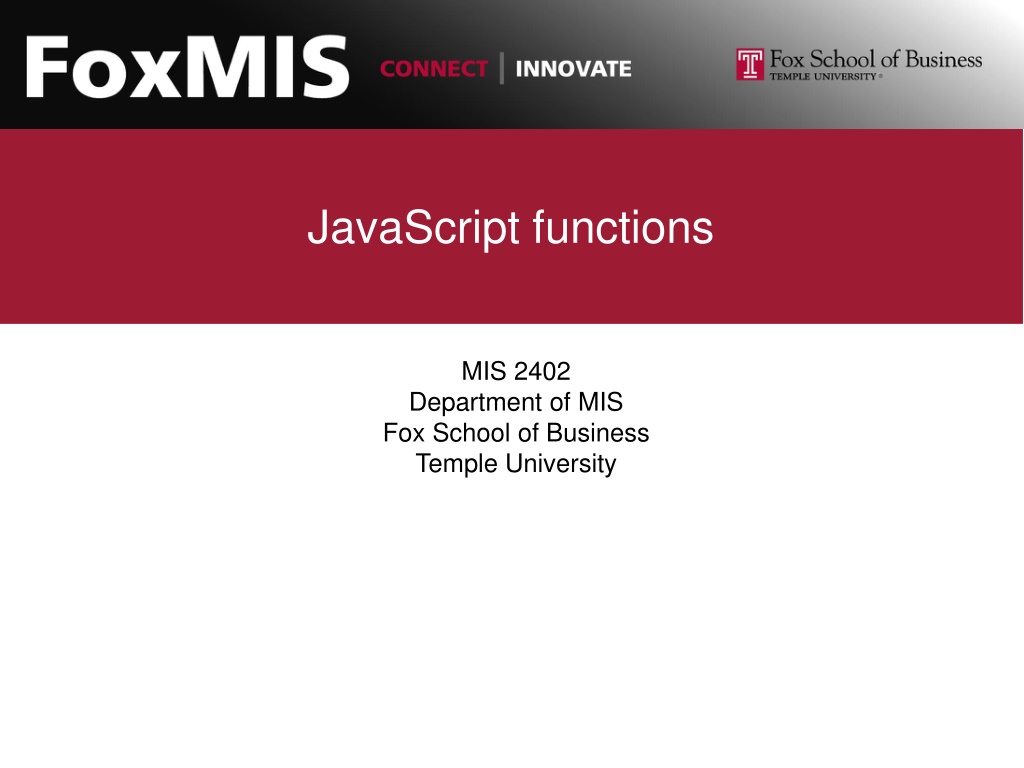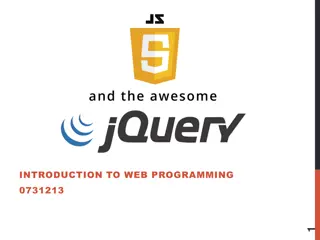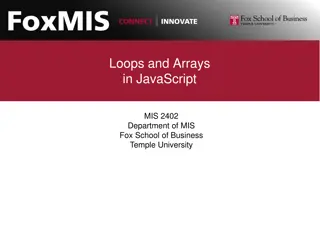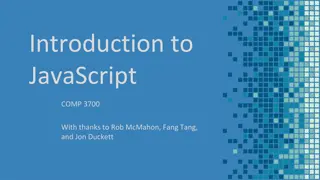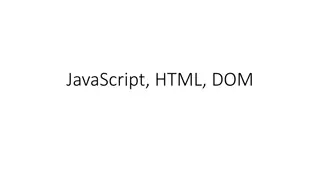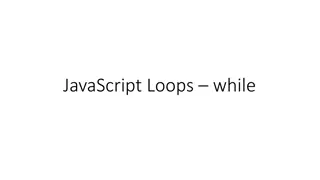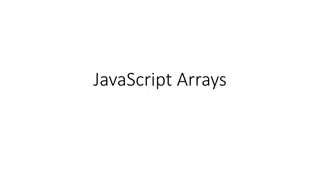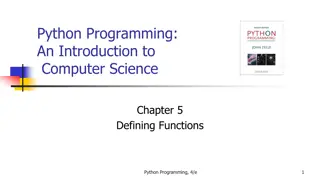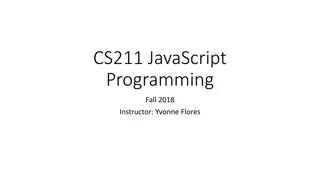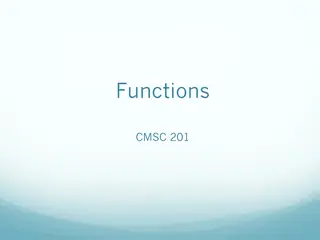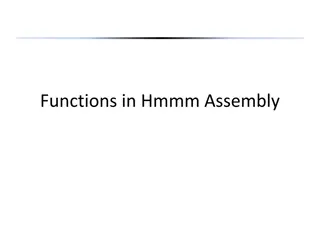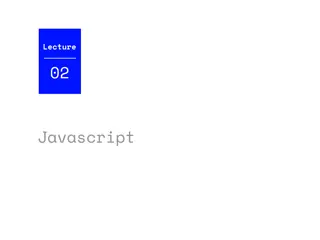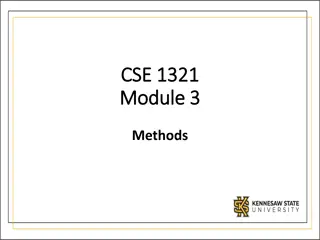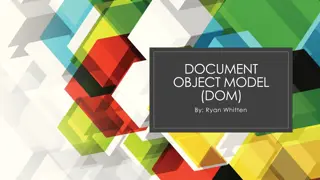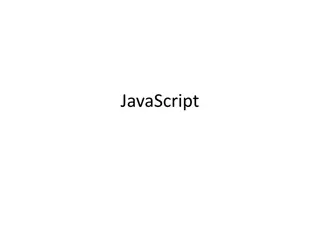Understanding JavaScript Functions in Programming
Explore the significance of functions in JavaScript programming, learn how to define and call functions, and grasp the importance of using functions for efficient code execution. Delve into the concepts of mathematical and programming functions, including examples and explanations to solidify your understanding.
Download Presentation

Please find below an Image/Link to download the presentation.
The content on the website is provided AS IS for your information and personal use only. It may not be sold, licensed, or shared on other websites without obtaining consent from the author. Download presentation by click this link. If you encounter any issues during the download, it is possible that the publisher has removed the file from their server.
E N D
Presentation Transcript
JavaScript functions MIS 2402 Department of MIS Fox School of Business Temple University
Advisory! This lecture presents some *big* ideas that will be very important in the days ahead. It ll be extra important to think both in terms of generalities (What is it we are trying to do? And why?) and in specifics (How do we express these ideas in JavaScript? What s the syntax?) Every lecture is important, but this one in particular will lay the groundwork for the rest of the semester. Functions are very important! 2
Before we begin Let s talk about $ What is that crazy $ thing we keep seeing? We saw it in week 2. Like this let your_name = $("#textEntered1").val(); And this $("#textDisplayed1").html("Hello " + your_name); What does it all mean? 3
The $ function, explained OK, it s time to come clean. The $ function is really at the heart of something called jQuery. Later in the semester we ll learn more about what jQuery is, and what it can do. But, for now, think of it this way: the $ means Select . So, when we say: $('#mymessage').html('Hello world! ); The browser selects the tag with the id mymessage ! Now take action on the tag you found. We haven t seen the last of the $ function! 4
Agenda Talk about what functions are Equip you with the ability to define your own functions Discuss the difference between defining a function and calling a function Discuss why functions are important 5
Whats a function? In mathematics, a function is one or more rules that are applied to an input in order to generate an output. The input is the number or value put into the function. The output is the number or value that the function generates. In this example, we say that f(x) returns the value of y. 6
What is a function? (2) In programming, a function is a collection of statements grouped together in such a way that they can receive zero, one, or more pieces of input. One or more programming statements are then used by the function to generate some output. Here are some examples of functions: function feet_to_inches(HowManyFeet){ let x = HowManyFeet * 12; return x; } function convertToCelcius(degrees_fahrenheit){ let the_answer = (degrees_fahrenheit - 32) * ( 5 / 9 ); return the_answer; } Notice the use of the command return in the above examples. 7
Defining and Calling Let s take a look at the feet_to_inches function. function feet_to_inches(HowManyFeet){ let x = HowManyFeet * 12; return x; } What we see above is the JavaScript code that defines the function. Take a look: The name of the function is feet_to_inches. It takes one input and that input is given then name HowManyFeet The two lines of code in between the { } define what the function does Defining a function is different from using a function. (Just like building a car is different from driving one, and building a chair is different from sitting in it!) We say we are calling the function when we use it. 8
Calling the function Here we are calling the feet_to_inches function. Notice that, once it is defined and in the computer s memory (as on the prior slide) it can be used over and over again with different input values. 9
Calling the function, saving the result Here we are calling the function, and storing the result in a new variable called y. Remember this? See the similarities? 10
What is a function? (3) So far, our examples illustrated functions which returned a value. In JavaScript, sometimes we don t worry about what value the function returns. Sometimes we just want to group a bunch of commands together because it is it convenient to do so. In those cases we leave the return value undefined. For example: function bottles_of_beer_song(iterations){ for (let i = iterations; i > 0; i--){ console.log(i + ' bottles of beer on the wall, ' ); console.log(i + ' bottles of beer!'); console.log('Take one down, pass it around, ' ); console.log((i - 1) + ' bottles of beer on the wall!'); console.log(' '); //print a blank line } } See fun01.html, fun02.html and fun03.html in funtimes.zip Don t forget to set and use breakpoints in the Chrome Developer Tools! 11
Why would you want to do all this? Functions in JavaScript (or any other programming language) allow us to divide and conquer . They provide a mechanism to break large, complicated problems down into a collection of smaller, simpler problems. Functions allow use assign meaningful names to blocks of code. For example: the name convertFtoC is more understandable than y = (x - 32) * (5/9); Functions help us avoid writing the same sort of code, over and over. Once I write a convertFtoC function, why would I ever write that formula ever again? I shouldn t have to. 12
Lets give it a try Vector Design by Vecteezy! 13
